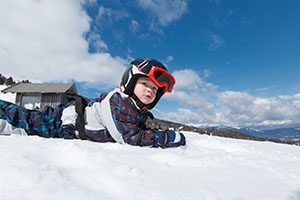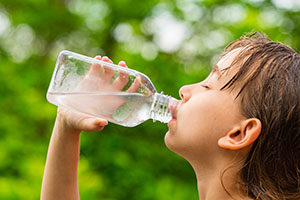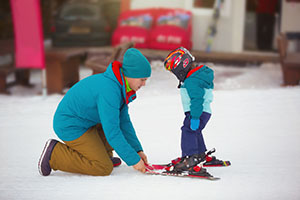Hi Kids! Good news regarding what’s good for you to eat on days when you spend time outdoors in cold weather. Tell your parents that there’s no need to make you eat yucky oatmeal or other ugh-tasting stuff while denying you a measly piece of candy, which is what you really want. Tell them that lots of snacks, especially chocolate-containing ones, are just what the doctor ordered for cold weather activities.
Here’s what you have to teach your parents:
- The colder the weather, the more calories you need to stay hearty. Calories provide the energy needed to maintain body temperature, warm the cold air you inhale, and supply fuel for muscles. Participating even in moderate sports – running around in the cold – requires about double the calories you need for sitting on the couch and watching TV.

- Frequent eating helps maintain steady heat production. This seems especially important in kids. They become hungrier more often, and are more likely to become fatigued and feel chilled if there is not a fairly constant supply of ready-to-use calories.
- “Trail food” mixes are ideal for rapid heat production.Typically these consist of raisins, dried fruits, chocolate and nuts, foods most kids really like. Raisins and fruits supply carbohydrates. Nuts supply proteins and chocolate supplies fat.
- Cold weather also increases the need for fluids. The body loses fluids by deeper breathing, perspiring under clothing, and exertion. And the more exertion, the deeper you breathe, further increasing fluid requirements. However, in cold weather especially, the sensation of thirst may lag behind the need for fluids. Therefore kids need to be reminded to drink frequently, even when they are not thirsty.

- The best fluids in cold weather are water and fruit juices. These are quickly absorbed. Juice supplies calories. But avoid very sweet drinks; they can upset stomachs and are absorbed more slowly.
- “Sports” drinks are not essential for children involved in everyday recreational activities. Water, fruit juices and trail mixes suffice. But sport drinks (Gatorade, for example) may be beneficial for teenagers involved in endurance sports such as cross-country skiing.
- Hot drinks in cold environments make you feel warmer but add little to body heat. The benefits are mostly psychological. A child would have to drink more than a quart (liter) of drinks at one time to generate significant amount of extra heat. In fact, cool fluids are absorbed somewhat faster and are more palatable in large amounts, though it takes a few calories to heat the fluids to body temperature.
 Discourage children from eating snow and ice.Even pure white snow may contain pollutants from the air, including trace minerals like mercury, albeit in insignificant amounts. Snow can also contain windblown soils that can include animal fecal matter, which can cause diarrhea. Moreover, a mouthful of snow yields only a few drops of water while the body needs calories to melt the snow. Ice yields more water than snow but uses up more calories to melt.
Discourage children from eating snow and ice.Even pure white snow may contain pollutants from the air, including trace minerals like mercury, albeit in insignificant amounts. Snow can also contain windblown soils that can include animal fecal matter, which can cause diarrhea. Moreover, a mouthful of snow yields only a few drops of water while the body needs calories to melt the snow. Ice yields more water than snow but uses up more calories to melt.- Dietary nutrients do not appear to boost energy levels. There are thousands of such supplements available, mostly combinations of vitamins, minerals, herbs, and other so-called “natural” substances. These products are usually accompanied by glowing testimonials of their benefits in cold weather. Most products have never been tested scientifically, and the few that have, were found not to be beneficial.
- Do you feed a cold and starve a fever?Or do you feed a fever and starve a cold? In fact, neither is correct. While these illnesses are especially common in wintertime, they have nothing to do with outdoor weather or sport activities. And nutrition plays no role in preventing everyday fevers and colds. (The “correct” old wives’ tale is/was: feed a cold, starve a fever.)

